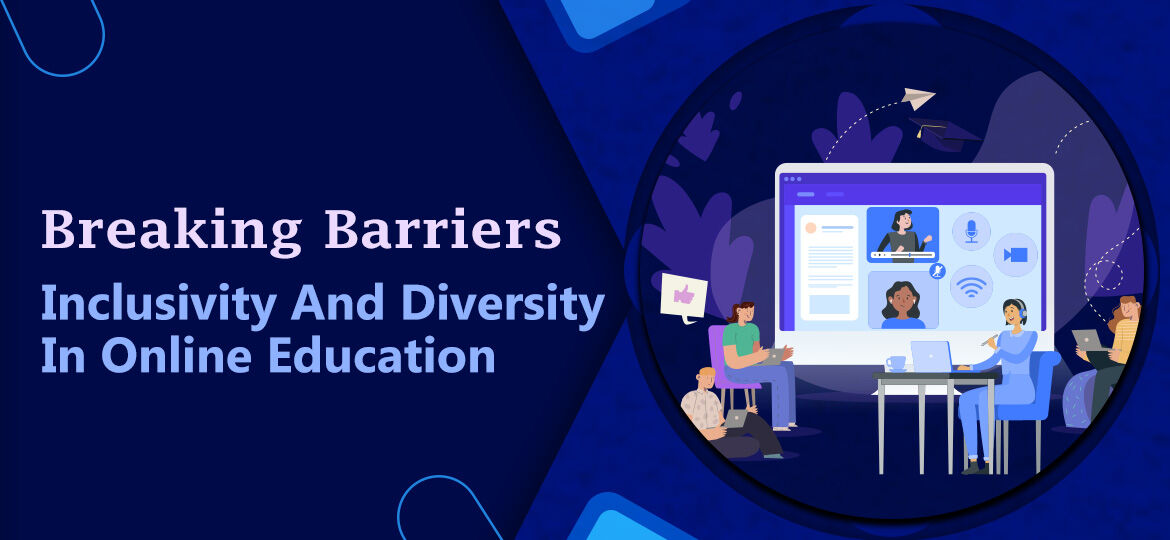
Advocating For Inclusive eLearning Courses For A Diverse Audience
It is quite necessary to create inclusive courses that are diverse and accept cultural differences among learners. We’ll discover more about the concepts of inclusivity and diversity in online education and their application in the lives of both learners and educators. We will also share some thoughts on developing a more inclusive and diverse eLearning course.
Diversity And Inclusivity In eLearning
Inclusivity and diversity relate to each other; they refer to the understanding and consideration of different individualities, behaviors, and perspectives a learner comes with. There should be a learning environment where each student feels safe and welcome. The platform is unbiased in every way. As such, the learning process should be equal for anyone who opts for it. Diversity requires acceptance and appreciation of a student, regardless of their differences.
The Importance Of Diversity And Inclusivity In eLearning
Why should we prioritize diversity and inclusivity in eLearning? Why is it so important—yet ignored by most of us? The simple answer is that these words are the ethics and foundations on which eLearning is created. eLearning platforms offer the keystone of learning and fulfill the dreams of numerous learners who choose them as their ladder to climb on. Adopting diversity and acknowledging every learner equally should be the practice. Their abilities, cultures, backgrounds, and anything else should not stop them from achieving their dreams.
As we walk the path of globalization and interconnecting the world, the eLearning industry must remember the need to implement diversity for real. The approach of all-in-one should be the goal instead of hanging upon one-size-fits-all. The importance of inclusion and diversity cannot be overemphasized. Celebrating the differences among our learners and creating a space where they can shine should be the motto.
Developing More Inclusive eLearning Courses
1. Understanding Different Learning Styles
Understanding different learning styles means that instructors need to adapt to the different learning styles of the learners to give inclusive eLearning a good go. Some learners may adapt to visual aids adeptly, while others may prefer auditory or experimental activities. By accommodating different tutoring styles and multimedia features, teachers can serve a wider population of learners.
- Universal Design for Learning (UDL)
When developing inclusive eLearning, it’s essential to stick to the Universal Design for Learning (UDL) principles. UDL’s core thing is to develop information and activities that are accessible to all learners, regardless of capability or experience. This will guarantee the learning accouterments are adaptable and adaptive, performing in a further inclusive educational experience.
2. Diversity And Inclusivity In The Online Classroom
- Building an environment of collaborative learning
In an online classroom, cultivating collaboration among students from different backgrounds contributes to a sense of community. Peer-to-peer relations, group systems, and discussion forums give students the chance to interact with different people, which improves their overall learning experience. - Diversity, Equity, and Inclusion for online courses
Introducing Diversity, Equity, and Inclusion (DEI) ideals into academics is critical. This entails picking different exemplifications and case studies that appeal to learners from different backgrounds. By addressing equity and inclusion, online courses can better reflect the diversity that students will meet in the real world.
3. Cultural Inclusivity In Online Learning
- Cultural sensitivity in material creation
Developing eLearning material requires cultural sensitivity. Avoiding biases and using varied cultural references helps all students feel seen and heard. This system helps enhance the learning experience and breaks down cultural barriers. - Multilingual support
It’s better to encourage cultural inclusion by acknowledging learner’s diverse language origins. Providing multilingual support, such as subtitles or translated materials, ensures that language barriers do not hamper learning.
4. Real-World Impact Of Diversity And Inclusion
- Enhancing critical thinking
Those who are exposed to a variety of viewpoints are forced to exercise critical thinking and expand their knowledge on a range of topics. By using a variety of voices in the eLearning courses, instructors may create a more welcoming and thought-provoking learning environment. - Preparing for the globalized world
In today’s linked globe, cultural competency is an invaluable skill. Students are better prepared for the possibilities and difficulties of a worldwide society, where tolerance and awareness of diversity are crucial, if diverse content is included in eLearning courses.
Conclusion
It is clear that the educational environment needs the creation of inclusive eLearning experiences. Students on the global level can receive help from these educational opportunities if the eLearning industry recognizes diversity and inclusivity and initiatively implements strategies to upgrade them. If we accept variety and value each student’s uniqueness, we can build a more vibrant and fair learning environment.
